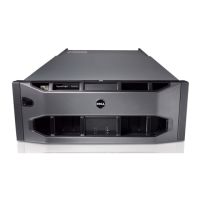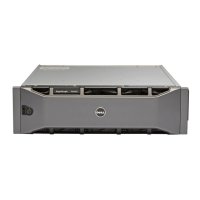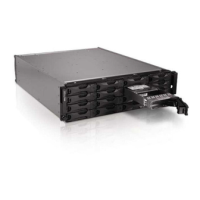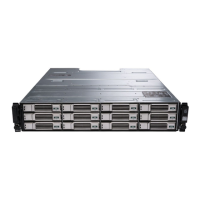Dell EqualLogic PS-M4110 Installation Guide
Chapter 5 Allocating Storage
l
iSCSI initiator – Restricts access to the specified initiator name.
l
IP address – Restricts access to iSCSI initiators with the specified ini-
tiator IP address. You may use asterisks as octet
wildcards
(for example,
12.16.*.*
). An asterisk can replace an entire octet, but it cannot replace a
digit within an octet.
At a later time, you can configure CHAP accounts in the group and use the
accounts in access control records to restrict access to volumes. See the Group
Administration manual for information.
You can also specify read/write or read-only access for the volume.
Optionally, you can set aside space for volume snapshots or configure a volume with thin provisioning. However,
thin provisioning is not appropriate for all storage environments. See the PS Series Group Administration manual
for information about advanced volume functionality.
Using the CLI to Create a Volume
1.
Log in to the group.
Use one of these methods to connect to the group:
–
Serial connection to a member. See Setting Up a Serial Connection to the Array on page 37.
–
Telnet or ssh connection to the group IP address.
At the login prompt, enter the grpadmin account name and the password that you specified when creating the
group.
2.
At the Group Manager command prompt, use the following command to create the volume:
volume create volume_name size [GB]
Specify the volume name and size (the default unit of measure is megabytes).
3.
Use the following command to create an access control record for the volume:
volume select volume_name access create access_control
The access_control parameter can be one or more of the following:
•
initiator initiator_name
•
ipaddress ip_address
You can create a maximum of 16 access control records for a volume.
The following example creates a 50-GB volume and one access control record. Only a computer with the
specified initiator name will be able to access the volume.

